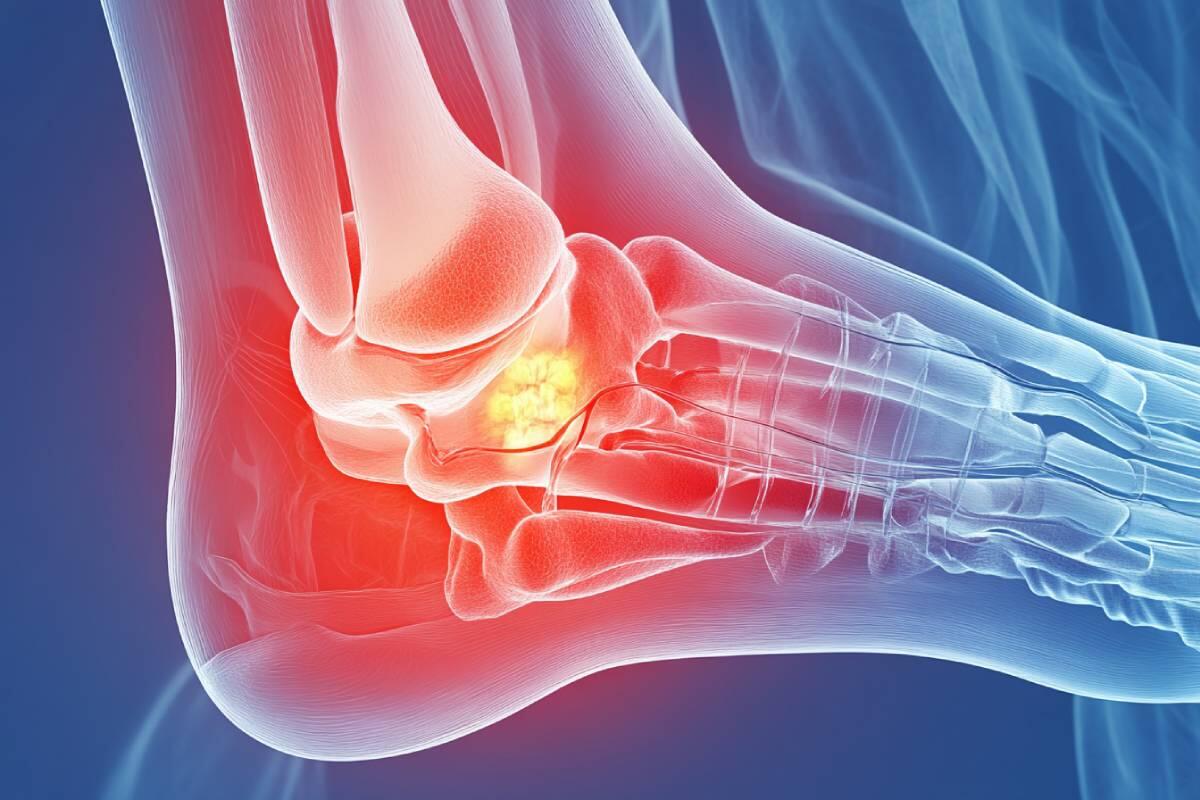Plantar Fasciitis: Causes and Treatments to Relieve Foot Pain
Has walking become more difficult? When our feet are not in good condition, they send signals that require our attention. Pain and discomfort are among these warning signs, which may indicate an inflammatory condition or a degenerative process known as plantar fasciitis.
Let's explore more about this condition and the available treatments to restore mobility and improve quality of life.
Understanding What the Fascia Is
Besides the bone structure, tendons, and joints, which are the most well-known components of foot health, there is a part that has gained more attention in recent years: the plantar fascia.
It is a membrane that covers the entire sole of the foot, extending from the heel bone (calcaneus) to the base of the toes. As part of the fibrous connective tissue (which is not very elastic), it can show signs of inflammation and stiffness, leading to pain when making contact with the ground.
The fascia covers various areas of the body and is located just below the skin. In the plantar region, its main function is to maintain the foot's arch, absorb shock, and distribute impact.
Pain and Other Symptoms of Plantar Fasciitis
"It feels like someone is stabbing me with a knife," says one patient.
Pain related to plantar fasciitis is usually intense and concentrated near the heel. Some people experience discomfort in other areas, and it is often worse in the morning. Others notice increased pain after climbing stairs or standing for long periods.
📌 Most common symptoms:
✔ Intense pain in the heel and sole of the foot;
✔ Swelling and redness of the skin;
✔ Difficulty moving the feet during stretches;
✔ Greater discomfort when taking the first steps of the day.
If left untreated, plantar fasciitis can affect other parts of the body, such as the knees, hips, and even the spine, compromising mobility and posture.
⚠ Difference Between Plantar Fasciitis and Heel Spur:
Although both conditions may have similar causes (impact-related injuries), a heel spur involves the formation of calcium deposits in the lower or back part of the heel bone. Only a specialist can correctly differentiate between the two.
Possible Causes of Plantar Fasciitis
Also known as plantar aponeurosis, plantar fasciitis has led many patients to seek medical attention for relief.
Pain can result from a degenerative process, caused by factors such as aging, excess weight, or repetitive impact exercises.
📌 Main risk factors:
✔ Constant microtrauma to the fascia;
✔ Excessive stress and repetitive impact (running, jumping);
✔ High or flat foot arches;
✔ Excessive use of high heels;
✔ Tight Achilles tendon;
✔ Obesity and excess weight on the feet.
📌 Most affected groups:
✔ People between 40 and 60 years old;
✔ Athletes and runners;
✔ Dancers;
✔ Women who wore high heels for many years.
I Have Plantar Fasciitis. Now What?
After performing clinical exams, X-rays, and ultrasounds, an orthopedist can diagnose plantar fasciitis and recommend the most appropriate treatment.
📌 Treatment options:
✔ Rest and reducing foot impact;
✔ Ice packs to reduce inflammation;
✔ Physical therapy to strengthen the plantar muscles;
✔ Orthopedic insoles for better weight distribution;
✔ Shockwave therapy (ESWT or TOC);
✔ Use of pain relievers and non-steroidal anti-inflammatory drugs (NSAIDs);
✔ Botulinum toxin injections to relax the muscles;
✔ Corticosteroid or anesthetic injections in severe cases;
✔ Surgery to release the plantar fascia (only as a last resort).
⚠ IMPORTANT: Recovery time can vary from weeks to months. Medical supervision is essential for effective treatment.
Prevention and Pain Relief
Treating plantar fasciitis requires patience, as recovery can be slow. However, adopting daily habits can help reduce pain and even prevent the condition.
📌 Tips for prevention and relief:
✔ Maintain a healthy body weight to reduce foot impact;
✔ Stretch before and after physical activities;
✔ Avoid walking on tiptoes;
✔ Limit the use of high heels;
✔ Massage the soles of your feet with therapy balls;
✔ Roll your feet over a frozen water bottle for 10 minutes;
✔ Perform exercises to strengthen foot muscles (such as picking up small objects with your toes).
Eastern Medicine: Reflexology and Acupuncture
Feet are essential for our overall health! Although often neglected, they support our body and mobility.
Traditional Eastern medicine has long valued the connection between the feet and the body, through techniques such as foot reflexology and acupuncture, which can help with pain management and mobility recovery.
🔹 If possible, combine acupuncture sessions with orthopedic treatment for better results.
⚠ This article does not replace medical consultation. If you experience persistent pain, see an orthopedist.
References
🔹 Drauzio Varella - Plantar Fasciitis
🔹 Hospital Israelita Albert Einstein - Plantar Fasciitis
